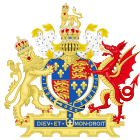Dissolution of Colleges Act 1547 facts for kids

|
|
| Long title | An Acte wherby certaine Chauntries Colleges Free Chapelles and the Possessions of the same be given to the Kinges Majestie. |
|---|---|
| Citation | 1 Edw. 6. c. 14 |
| Other legislation | |
| Repealed by | Charities Act 1960 |
|
Status: Repealed
|
|
The Dissolution of Colleges Act 1547 was an important law passed in England a long time ago, in 1547. It was a big step in the English Reformation, which was a time of major religious change. This law gave King Edward VI control over many religious places and their money. These places included "colleges" and "chantries."
Contents
What were Colleges and Chantries?
To understand this law, it helps to know what colleges and chantries were back then.
Colleges in 1547
In the 1500s, a "college" was often a group of priests living together. They usually worked at a church or a cathedral. Their main job was to pray for people and to teach. These colleges were not like the universities we have today. They were more focused on religious life and prayer.
Chantries and their purpose
A "chantry" was a special place, often a small chapel or an altar inside a church. Rich people would pay for a priest to pray for their souls after they died. These prayers were believed to help the dead person get to heaven. So, chantries were built and supported by gifts of land or money.
Why did King Edward VI dissolve them?
King Edward VI was very young when he became king. His advisors, who were in charge, had two main reasons for passing this Act.
Religious changes
During the English Reformation, England was moving away from the Roman Catholic Church. Many people, including the King's advisors, believed that praying for the dead was an old Catholic practice. They thought it did not fit with the new Protestant ideas. By closing chantries, they wanted to stop these prayers.
Money for the Crown
The King's government also needed money. By taking over the lands and wealth of these colleges and chantries, the Crown gained a lot of property. This money could be used to pay for wars or other government needs. It was a way for the King to become richer and more powerful.
What happened after the Act?
After the Act was passed, many colleges and chantries were closed down. Their buildings and lands became the property of the King. This had a big impact on local communities. Many priests lost their jobs, and some religious traditions ended. The money and land were then sold off or given to the King's supporters.
When was the Act repealed?
This old law stayed on the books for a very long time. It was finally removed from English law much later, in 1960. The Charities Act 1960 officially ended the Dissolution of Colleges Act 1547. This means the Act is no longer valid today.
See also
- Chantry § Abolition of Chantries Acts, 1545 and 1547

